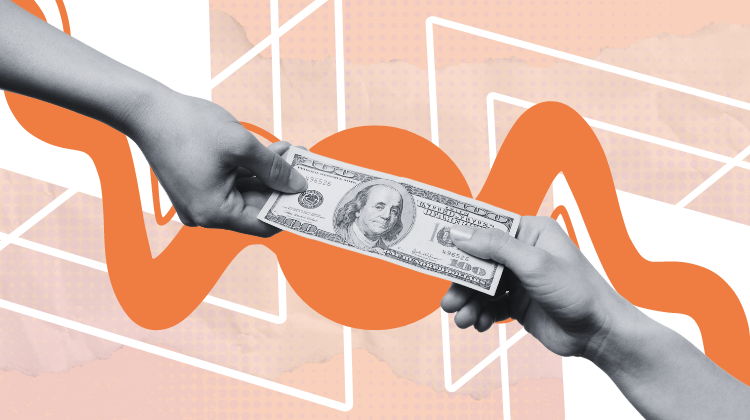Cardholders are expecting more from their digital banking. What will it take us to get there?: 5 questions with Mastercard’s Melanie Fuller
- The current shopping experience only services the customer as far as the purchase, but banks and merchants can work together to help customers find ease in tracking their finances and managing subscriptions.
- Mastercard's, SVP, Consumer Clarity and Fraud Insights, Melanie Fuller, dives into how consumers' relationship with their money has evolved, and how FIs and merchants can use this change to make the digital banking app do more than just holding money.

As the emphasis on digital channels has grown, financial institutions have had to break out of legacy thinking and build for an online world. But the task has not ended here. The pace of change in digital environments is unlike anything the financial industry has seen before, and it requires FIs to think more creatively about how their services and customer touchpoints will evolve over time.
One illustrative example lies in something most banks already understand is table stakes: their digital banking app. Mastercard’s, SVP, Consumer Clarity and Fraud Insights, Melanie Fuller, argues that the digital banking app needs to push into spaces that are currently causing consumers the most friction: post purchase tasks.
While the subscription economy focuses on making the purchase funnel as smooth as possible, once the cycle is complete, consumers are thrust into post-purchase workflows that don’t focus on their convenience. In this conversation, Fuller breaks down how consumers’ relationship with money has evolved, and how that evolution is playing into what customers expect of the brands they shop and bank with. Its a study of how the banking app can expand beyond its current focus, and how both merchants and banks stand to win from it.

In the past few years, how have consumers’ relationship with their money evolved? Is this causing a change in what they expect of their banks?
Fuller, Mastercard: So, I think about how we used to say ‘count your pennies’ to mean managing your budget. But for the younger generation, this wouldn’t make much sense to them.
First, their bank app is taking care of all the ‘counting’ for them, and most people don’t carry much cash–if any–to even count. Most of our money is digital, so much so that some countries aren’t even making the penny anymore, and this is changing the way people view their finances and how they expect to manage them.
With so many of our purchases and finances happening digitally, the expectation is that these experiences should be just as seamless and convenient as doing anything else online or in-app. There’s less patience for experiences that are fragmented or require too many steps or, probably by far the worst offense of all, can’t be done online to begin with.
In fact, 75% of cardholders think that digital banking tools and features must be intuitive and easy to use, otherwise they won’t use them.
When it comes to managing and making payments, what parts of the payment and transaction cycle do customers find the most difficult to deal with?
Fuller, Mastercard: There’s been a lot of work across the payments industry to make every payment seamless, no matter when, where, or how someone pays–whether it’s a click, tap or even a face scan.
There’s a lot of technology upfront that’s been built to make this happen. But on the other side of the equation, what support exists after a purchase is made?
With more of our purchases being done digitally, and the growth of the subscription economy, it’s becoming harder for people to keep track of their finances and manage their purchases after the payment’s been made.
A big friction point for many consumers is that post-purchase journey and just being able to see a full view of their financial health in one place. Right now, the details of their purchase history are spread out across platforms–all of their digital transactions are in their bank app, but details on what they actually purchased may be in a merchant app, in their email, or on a paper receipt.
This makes it harder for the average person to keep track of their purchase history. Even simple things like having clear merchant names logos and itemized purchase details in their bank app can help make it easier to recognize them. And it does have some downstream impact, in one of our recent surveys we found that 24% of consumers investigated a transaction in the last 12 months simply because they didn’t recognize it.
Another fiction point is keeping track of all our subscriptions. Giving people more subscription details directly in their bank app can help them more easily keep track of what payments are recurring, when they’re happening, and even allowing them to manage them directly in their bank app by either pausing them, changing their subscription level or just checking on the status.
Given the competition merchants face, what strategies should they use to drive loyalty with customers?
Fuller, Mastercard: For many merchants, the digital experience is an important part of their brand–everything from making sure they can be found on google, making sure their website works for mobile, and ensuring people can pay how they want.
But a big portion of this is still locked in the merchant environment–which to be clear is a very important channel–but consumers are looking for ease and experience in everything they do. Customers interact with many different merchants, but the only place they see all their transactions in one place is their
bank app.
So, for merchants, it shouldn’t just be about making their digital experience the best it can be, but also meeting customers where they are. The reality is people really only use about nine apps on their phone daily. One of those might be a merchant’s, but certainly one of those nine apps is their primary bank’s app. About 60% of millennials log in to their accounts more than 5 times per week.
Unlocking the experience beyond just the merchant side, and bringing it into issuers’ apps, I see as being a big win for merchants looking to be really customer focused and wanting to level up their digital experience.
In a similar vein, most banks have a digital presence now, and as the space gets more crowded how can banks iterate and improve upon their digital experiences?
Fuller, Mastercard: I think this is very much the other side of the coin from merchants. Issuers have a bank app that, for the most part, is highly used by their customers. The digital experience they offer is one of the greatest selling features they have to win new customers over, and to retain their existing ones. But keeping that experience relevant, simple and focused on what customers want isn’t always easy.
50% of consumers would consider switching banks to get the features or services they want and expect.
Beyond viewing purchase history, maybe making a deposit online or paying in installments, the digital bank app hasn’t changed that drastically from when it first launched. And while neobanks continue to challenge the status quo, I think we’re about to witness a change in the banking industry, and the leaders will probably be the banks that can offer a more unified, seamless experience that connects merchants, consumers and issuers together.
While bringing ease of use to customers is important for customer satisfaction, how can merchants and banks find synergies between their own interests and the customer’s?
Fuller, Mastercard: I think the next big thing for the digital ecosystem will be bridging that gap between issuers and merchants. Things like sharing digital receipts, enabling subscription controls, or even offering loyalty program or coupons right in the bank app. It’s a win for merchants as they get to talk to their customer directly no matter what channel they’re in, and for issuers it gives them a chance to create that next-gen digital banking experience that will create a competitive advantage.
It’s something we’ve been working to enable at Ethoca, a Mastercard company. It’s not just about building a better digital experience, there are some real advantages to it as well. For issuers, that next level of detail right in their digital channels often translates into increased customer satisfaction, more efficient operations and less calls into the call center as well as increase in top of wallet spend.
For merchants, it means a more direct line to their customers and addressing the problem upfront if there is one, which can lead to fewer chargebacks and increased authorization rates. Ultimately, if merchants and issuers come together to deliver their shared customers the experience they want, it benefits everyone. It’s better business, a better experience, and it makes dollars and sense in the long run.


